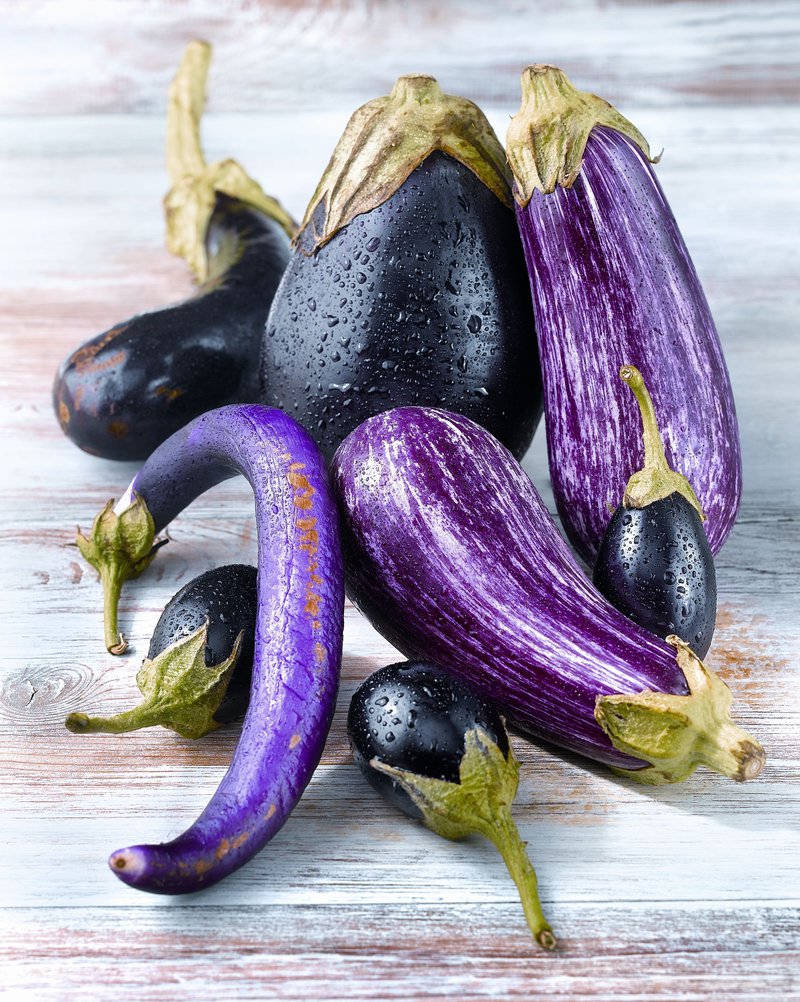FOOD BASKET. CUINA magazine. PHOTO:
Ornament to grub
Aubergines went from the garden to kitchen
The aubergines, or eggplant as it is called in North America, Australia and New Zealand, is a vegetable we consume before it is fully ripe. However, it wasn't always like that. Originally from India, from where it spread to Turkey, Egypt and other Mediterranean countries, it was first appreciated as an ornamental plant and even thought to be inedible and that eating it could lead to madness. Yet, over time, the aubergine eventually found its way into kitchens, especially after some of its bitterness was bred out of it.
In fact, when cooking with aubergines, bitterness can be a problem, a characteristic that can be solved by peeling or cutting them up and leaving them to soak in water. As their spongy flesh tends to soak up cooking oil, aubergines are often cooked after first covering them in breadcrumbs or batter. However, perhaps the optimal way to prepare them is baked in their skins. In fact, the oldest recipes advise peeling them before cooking them, but today's varieties do not have such bitter-tasting skins as in the past.
Keeping aubergines can be tricky. They give off ethylene, which causes other vegetables to go off more quickly, even inside a fridge. Thus, the best thing is to keep them in the fridge, but separate from other vegetables and without covering them so that the gas can disperse, helping to keep them fresher for longer.
When selecting aubergines, we should be looking for firm, regular-shaped examples with a uniform colour. The most tender -and tastiest- have smooth, shiny skins.

